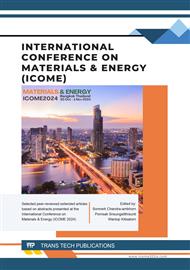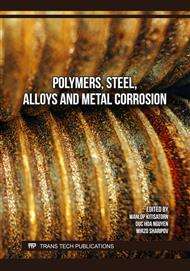p.21
p.33
p.41
p.49
p.57
p.65
p.79
p.87
p.97
Comparative Study of Corrosion Resistance in Heat-Treated Bainitic and Pearlitic Steels in Sodium Chloride Solution under Room and Elevated Temperatures
Abstract:
The development of multiphase bainitic/martensitic steel aims to enhance the mechanical properties and corrosion resistance compared to traditional pearlitic steel. However, the impact of elevated temperatures on the corrosion resistance behavior of these materials cannot be overlooked. This study investigates the corrosion resistance behavior of multiphase bainitic/martensitic steel and pearlitic steel at varying temperatures. Electrochemical tests using Electrochemical Impedance Spectroscopy (EIS) and Linear Polarization (LP) in a 3.5 wt.% NaCl solution demonstrate a consistent trend: acicular bainitic steel exhibits superior corrosion resistance compared to granular bainitic steel and pearlitic steel at both room temperature and elevated temperatures. Further characterization using Scanning Electron Microscopy (SEM) and X-ray Diffraction (XRD) reveals that the formation of oxide layers significantly contributes to the enhanced corrosion resistance observed in these materials.
Info:
Periodical:
Pages:
57-64
Citation:
Online since:
December 2024
Authors:
Keywords:
Price:
Сopyright:
© 2024 Trans Tech Publications Ltd. All Rights Reserved
Share:
Citation:



